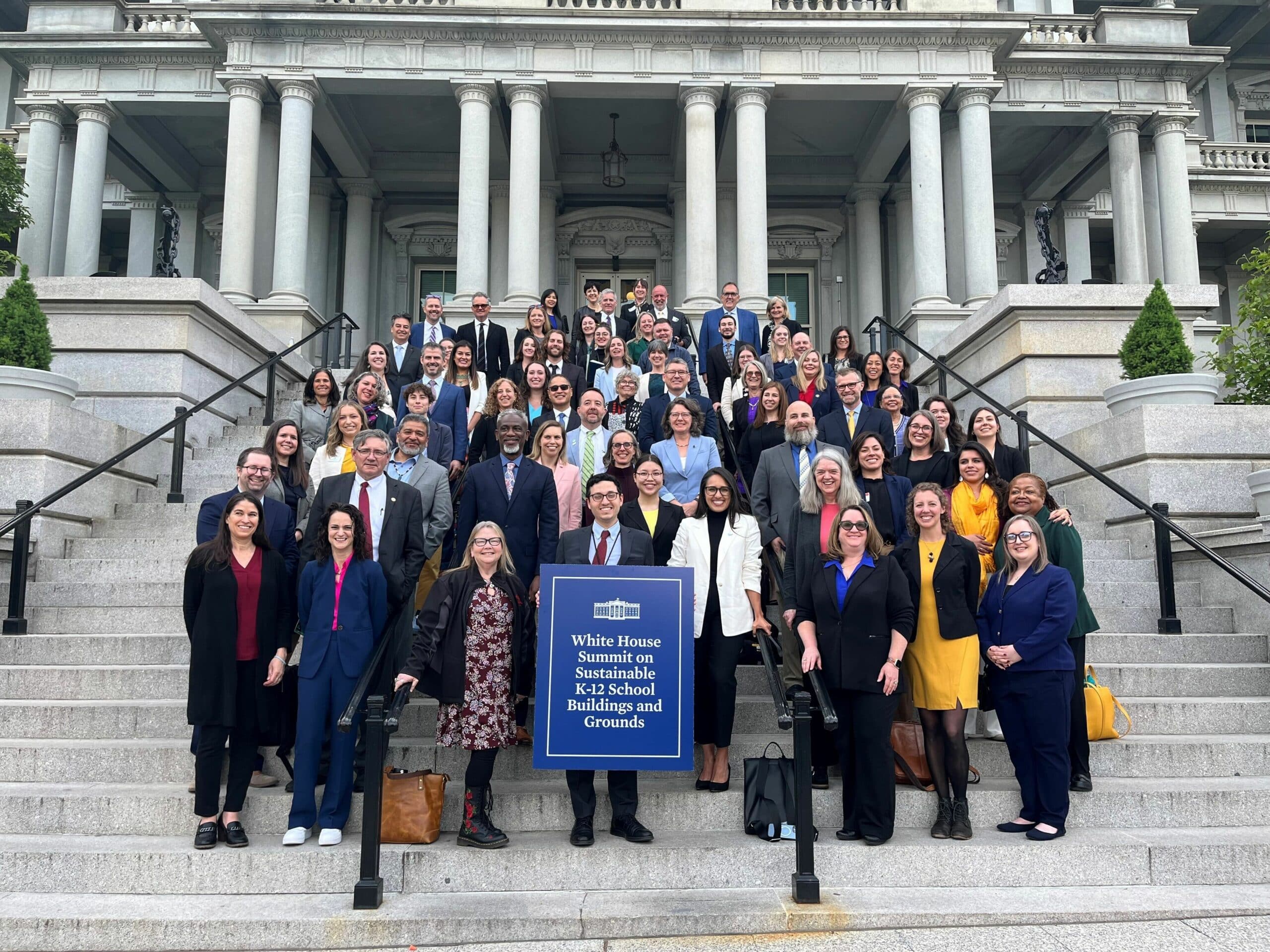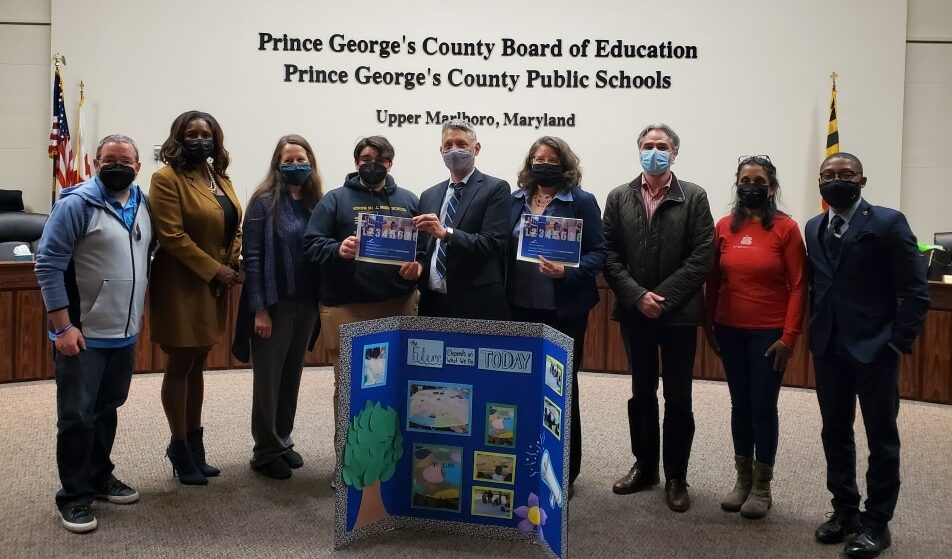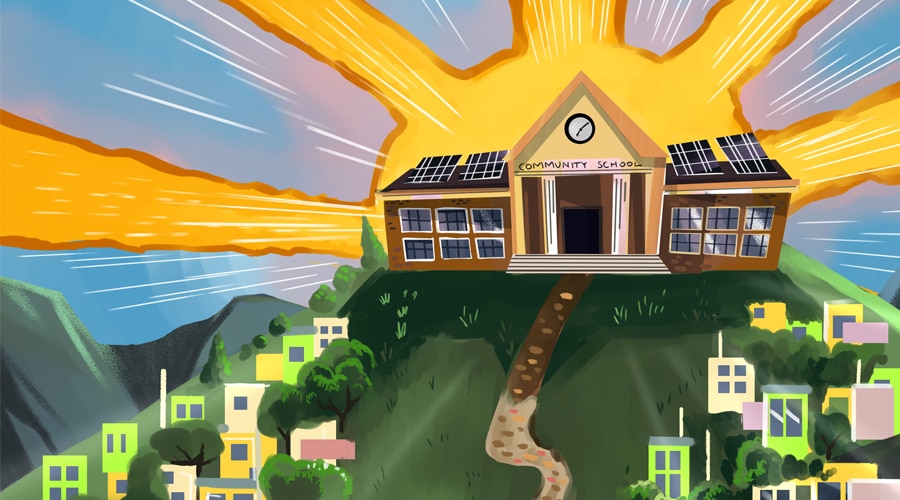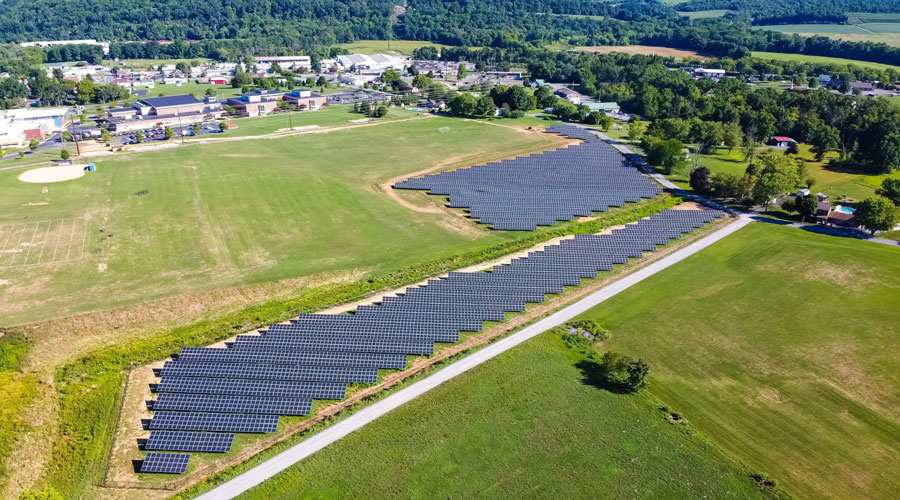On Apr 26, 2024, Generation180 participated in the first-ever White House Summit for Sustainable and Healthy K-12 School Buildings and Grounds, an event that brought together the leading school district administrators, federal agencies, nonprofit organizations, and industry partners who are dedicated to creating sustainable and healthy school infrastructure across the country. The summit is the latest example of the unprecedented federal resources that have been committed by the Biden-Harris administration to support improvements to school infrastructure while fostering safe, sustainable learning environments. The day-long event included a presentation for school districts on accessing clean energy tax credits through Direct Pay, inspiration from Biden’s National Climate Advisor, Ali Zaidi, and the heads of U.S. Department of Energy and U.S. EPA, and group discussions with the U.S. Department of Education. Here is a link to the recording of the public livestream of the White House Summit on Sustainable K-12 School Buildings and Grounds.
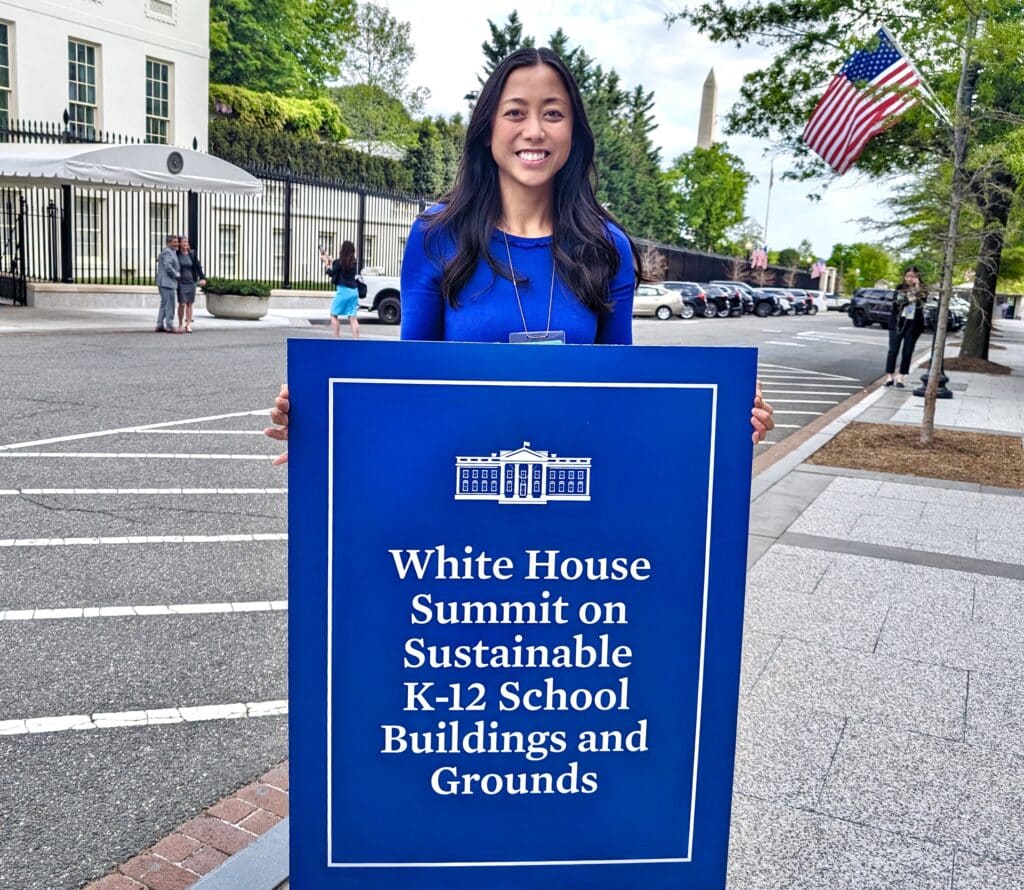
One of the highlights of the summit was hearing from the school district leaders across the country, especially the members Generation180’s School Leadership in Clean Energy (SLICE) network, who are trailblazing to create sustainable and healthy school campuses. These school leaders celebrated wins in expertly leveraging federal incentives to curb carbon emissions, ensuring district climate action plans promote equity and justice, and building community resilience through clean energy. A common theme emerged across their stories– the importance of support networks (including Generation180’s SLICE network), partnerships, and collective efforts in creating clean-powered, resilient schools. Our connectedness to one another is crucial for achieving our climate goals and for inspiring others to take action. Representing communities of all shapes and sizes from every corner of the county, the school leaders agreed we are all in this together.
Below is a summary of selected themes and stories from school district panelists at the summit.
Using federal resources to cut emissions and energy costs
Eric Becoats, Superintendent of Wililam Penn School District (WPSD), spoke in the first panel of the summit about the utilization of the unprecedented federal and funding to cut emissions and energy costs. As a leader of a low-wealth district outside of Philadelphia, he listened to the concerns of the students, community, and staff about the critical need to improve school facilities and learning environments across the district. He sought additional resources to fund the $160 million in infrastructure upgrades identified in the facilities master plan. Under the leadership of Becoats, WPSD became one of the 24 school districts selected to receive a competitive award in the first round of funding from the U.S. Department of Energy’s Renew America’s Schools Program, a $500 million fund created by the Bipartisan Infrastructure Law to support energy upgrades at K-12 schools. WPSD will receive a grant of $7.2 million to install equipment at Penn Wood High School-Cypress Street Campus that will move the building towards net-zero energy status, including a high-efficiency heat pump, LED lighting, and a solar PV array.
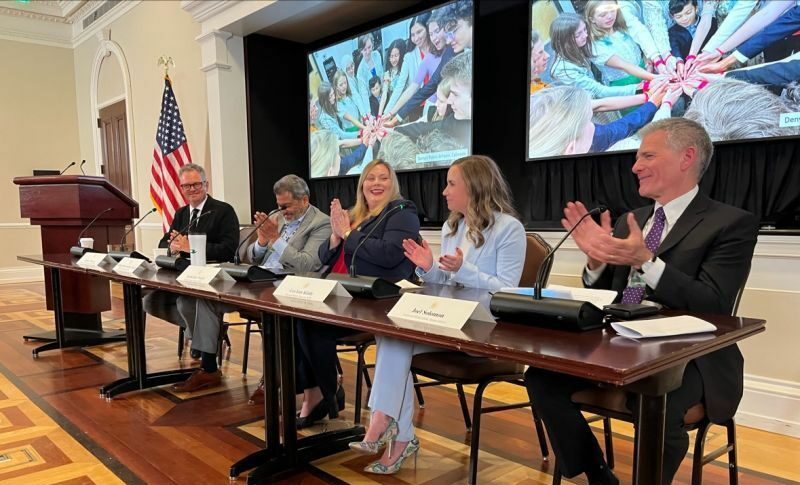
Student activism driving climate action
LeeAnn Kittle, Executive Director of Sustainability of Denver Public Schools, explained that the students at Denver Public School (DPS), the largest district in the state with over 90,000 students, are experience climate change right now and they are vocal about it. Denver students have experienced the world’s worst air quality, have been displaced by wildfires, and have lost learning days due to excessive heat in buildings with no air conditioning. Beginning in 2020, students gathered online during the pandemic to urge their board of education to pass a climate action policy. After two years of student engagement and district collaboration, the Board of Education unanimously passed a robust climate action plan.Student advocacy created the urgency to pass a comprehensive district climate action policy in 2022. According to Kittle, “Denver Public Schools is working hard to change the narrative from climate anxiety among out youth to one of bold action, innovation, and accountability.” One example of innovation that Kittle pointed to is a partnership with the City of Denver to participate in the Denver Community Solar Program. Solar arrays located on school sites are generating clean electricity that will be allocated to low-income families to reduce their utility bills.
Equity and justice in school facilities and infrastructure
Through her work to modernize the aging school infrastructure at the oldest school district in the country, Boston Public School’s (BPS) Katherine Walsh hopes to be an example for other schools on what is possible. With 74% of students in BPS attending schools that are classified as low-income, disadvantaged, and located in high natural hazard areas, racial and climate justice are paramount to her work as the Sustainability, Energy, and Environment Program Director at BPS. Katherine spoke about the importance of serving students by prioritizing clean air, clean water, and clean energy at BPS schools. The Green New Deal for Boston Public Schools is the district’s shared commitment with the city of Boston and plan for mobilizing the needed capital, centering equity, and redesigning the district’s infrastructure to create healthier communities.
As the Director of Sustainability and Adaptation at Modesto Unified School District (MUSD) in California, Gilbert Blue Feather Rosas centers equity and justice in his work to serve a community in which majority of families live below the poverty line and participate in the agricultural economy in the San Joaquin Valley. Rosas has a led a record-setting transition from polluting diesel buses to electric school buses with zero-tailpipe emissions at the district, where the students and families have some of the highest rates of asthma in the state. According to Rosas, the electric school bus fleet not only improved the health of the students and families, but it also became a visual symbol of hope and change. As a person of color himself, Rosas spoke to the importance of representation in MUSD’s sustainability mission. “It’s more important that the students actually see people that look like them are in positions of leadership, and that they can do these kinds of projects that gain national attention.”
“It’s more important that the students actually see people that look like them are in positions of leadership, and that they can do these kinds of projects that gain national attention.”
– Gilbert Blue Feather Rosas, Director of Sustainability and Adaptation at Modesto Unified School District
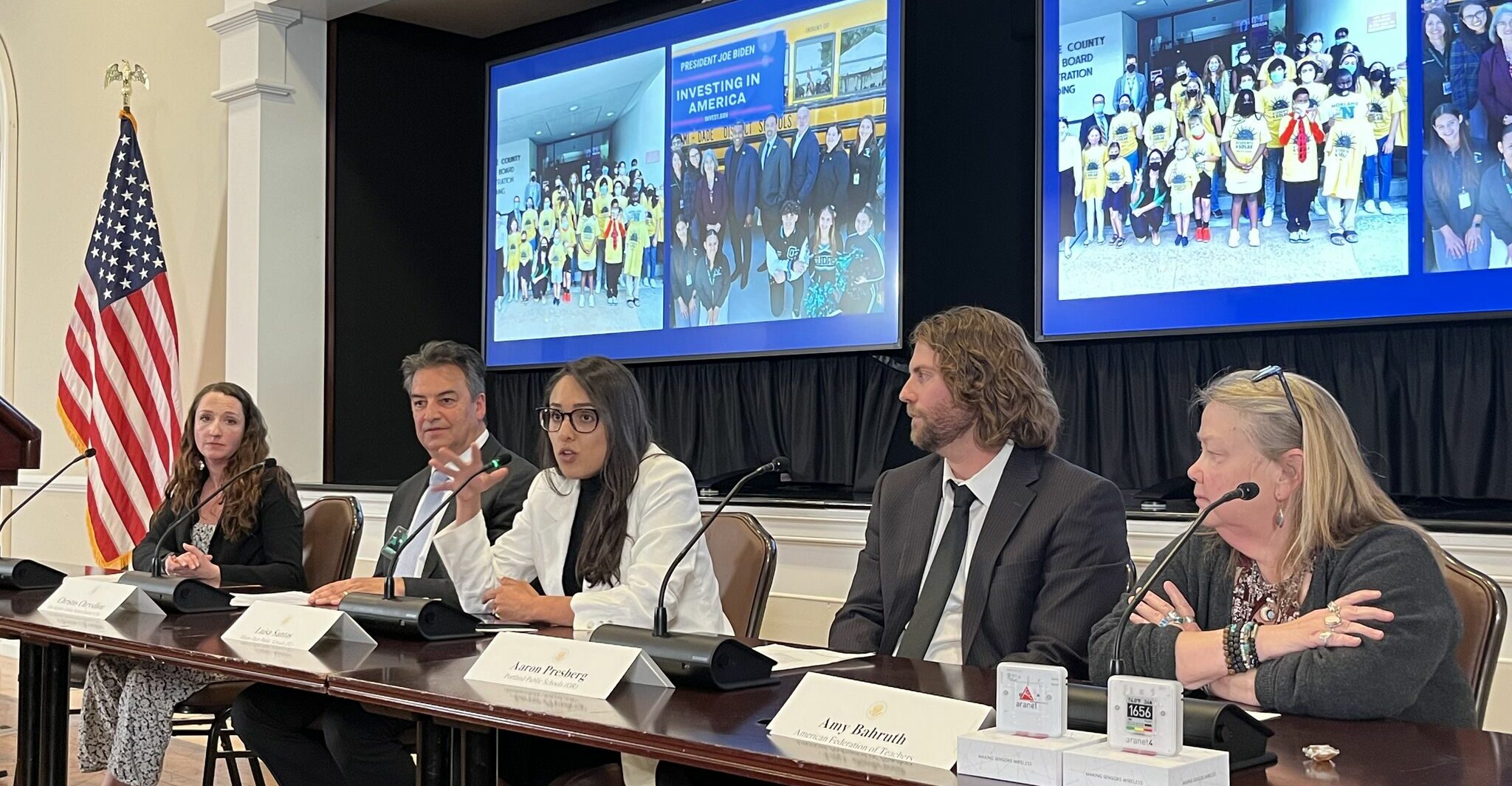
Leading communities on the frontline of climate change
Miami-Dade County Public Schools (M-DCPS) in Florida, the third largest district in the country, is on the frontline of climate change and grapples with the rapidly intensifying impacts of hurricanes, sea level rise, flooding, and extreme heat days. School Board Member Luisa Santos described her role as a leader was to respond to the community, which had been advocating for climate action for decades. On Earth Day 2021, Luisa led the school board in a unanimous vote to pass a resolution put forward by student advocates and the PTA to reach 100% clean energy by 2030. (Click here to read more about the student and parent advocates that Generation180 supported). Santos acknowledged Generation180 as a resource, as well as fellow panelist Christos Chrysiliou from Los Angeles Unified School District (LAUSD) for providing support and inspiration as her district began the process of creating a climate action plan to meet their ambitious clean energy goals. As a school board member, Santos is driving the policy and supporting the district administrators (including Sustainability Officer Karly Pulido) to be bold and accelerate the pace of change to reduce the district’s carbon emissions and to respond to the rapidly changing environment.
“When it comes to sustainability [and] climate change work– you don’t have to do it by yourself.”
– Aaron Presberg, Senior Program Manager for Energy & Sustainability at Portland Public Schools
Fostering partnerships to achieve carbon neutrality and resilience
Portland Public Schools (PPS) in Oregon is dealing with the extremes of climate change, with excessive heat and wildfires in the summer and devastating ice storms in the winter that recently damaged and closed down two school buildings. With a district goal to be net-zero carbon emissions by 2040 and a need to address adaptation and resilience to climate impacts, Aaron Presberg, Senior Program Manager for Energy & Sustainability at PPS, spoke about how the district’s community-driven climate policy relies on expertise from surrounding districts and partnerships with local utilities to build grid resilience. Presberg noted that while many districts may not have the in-house expertise to accomplish sustainability and resilience goals on their own, there are partners out there eager to help. In the case of PPS, they partnered with Multnomah County’s emergency preparedness staff to successfully apply for an EPA technical assistance grant to make their schools more resilient to extreme heat and wildfire smoke. He echoed the remarks of his colleagues and fellow panelists noting “when it comes to sustainability [and] climate change work– you don’t have to do it by yourself.”












